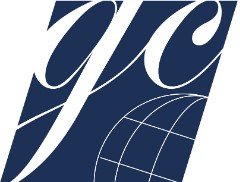Balloons, USB drives, and South Korean dramas become a flashpoint in struggle for North Korean human rights
In December, the South Korean National Assembly passed a bill that criminalizes the launching of balloons filled with propaganda leaflets across its border into North Korea. The now-banned leaflets contain information highly critical of the North Korean regime, and are typically coupled with money, food, and medicine. These balloons have also been known to contain items illegal in North Korea, such as USB drives with South Korean television dramas or radios that are programmed to receive foreign radio programs. The bill sparked backlash from various groups, including members of South Korea’s conservative party, North Korean defectors, human rights activists, and legislative leaders from around the world, who argue that the bill violates North Koreans’ fundamental right to freedom of expression.
What is the origin of this controversy and what are its implications for North Korean human rights? According to the UN, North Korea consistently ranks among the worst nations in the world for widespread gross human rights violations. The nation ranks last out of 180 countries for freedom of the press, prompting critics to argue that the anti-leaflet bill is a violation of North Koreans’ right to access information. Through the use of state-run media and harsh legal penalties, North Korea has historically maintained absolute control over the spread of external information in the country. Since the late 1990s, however, the Kim regime has struggled to retain its tight grip on information, with progressively more foreign media and information flowing into the country. Reports indicate that many North Koreans watch South Korean television shows that are smuggled into the country and listen to foreign radio programs, such as Radio Free Asia and Voice of America.
In an effort to crackdown on the spread of foreign media and information, North Korea recently issued a law that imposes fines and imprisonment for anyone who is caught possessing foreign media or speaking in a South Korean accent. Although this type of restriction is not a novel concept in North Korea, it is an obvious sign that the state recognizes the malignant threat posed by foreign media and information on its control over society. The propaganda leaflets are just one example of this potential threat emanating from outside North Korea’s borders.
There are, however, serious doubts over the effectiveness of the leaflets. Studies suggest that the leaflet-filled balloons usually do not travel far enough into North Korea to reach major population centers, unless under specific weather conditions. South Korea contends that the propaganda leaflets contribute to waste and pose a security threat to people living along the border. In fact, a skirmish between South Korea and North Korea occurred along the Demilitarized Zone in 2014 following a deployment of such leaflets.
Although it is important to consider these concerns, the leaflets remain essential to the promotion of human rights in North Korea. For instance, Lee Min-bok—the leader of a South Korea-based group responsible for sending leaflets—reportedly fled the North after reading the truth about the Korean War from a leaflet. North Korea falsely claims that South Korea, along with support from the United States, invaded the North in 1950 and sparked the beginning of Korea’s civil war. While Lee’s story may only represent the experience of one individual, it demonstrates how the leaflets can contribute to the spread of vital information inside North Korea.
South Korea’s anti-leaflet bill can also be perceived as a political move aimed at reinstating inter-Korean dialogue and cooperation. Opponents argue that South Korea is using the bill to appease North Korea, whose relations with the South weakened last year following a brief period of détente. North Korea has frequently expressed its objection to the leaflets. Last year, it called on South Korea to halt the sending of leaflets, but shortly thereafter cut off communication lines with the South and blew up an inter-Korean liaison building. Responding to critics of the bill, South Korea insists it is upholding an inter-Korean agreement from 2018, which called on both sides to cease hostilities at the border. This included the use of propaganda leaflets—a practice which both Koreas engaged in for decades—as well as the broadcasting casting of South Korean K-pop music across the border from the South.
Despite these considerations, there is little indication that North Korea has perceived the anti-leaflet bill as a gesture of goodwill from the South. In January, North Korea sharply criticised South Korean government officials as “idiots,” and vowed to further strengthen its nuclear weapons capabilities. Based on these recent developments, it is clear that the anti-leaflet bill has not improved inter-Korean relations, nor has North Korea expressed interest in reinstating communication with the South. South Korea’s anti-leaflet bill, as a result, is unnecessary and does little to promote the real issue at stake—North Korean human rights.

